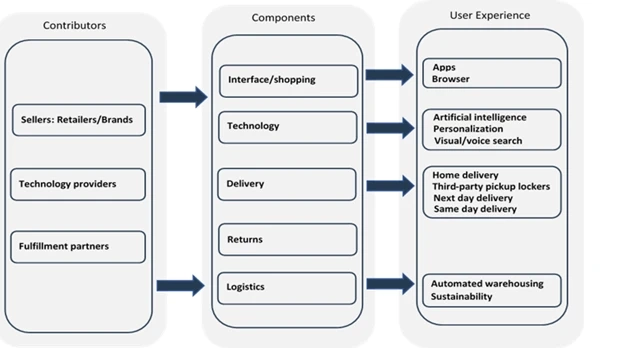The consumer goods industry is a dynamic realm shaped by shifting consumer behaviors, technological advancements, and sustainability imperatives. This comprehensive report delves into key trends reshaping the landscape, from digital transformation to sustainable practices, offering insights into the future of consumer goods.
1. Digital Transformation and E-Commerce Surge
1.1 Rise of E-Commerce Platforms
The consumer goods industry is witnessing a significant shift toward online retail. E-commerce platforms, propelled by changing consumer preferences and convenience, are becoming key channels for product discovery and purchase.
1.2 Personalized Shopping Experiences
Digital transformation has paved the way for personalized shopping experiences. Advanced analytics and AI algorithms analyze consumer data, allowing brands to offer tailored recommendations, discounts, and promotions, enhancing customer engagement.
2. Sustainability at the Core
2.1 Eco-Friendly Packaging Solutions
Consumer goods companies are increasingly adopting eco-friendly packaging solutions. From recyclable materials to minimalist packaging designs, sustainability has become a key focus area to reduce environmental impact.
2.2 Ethical and Transparent Sourcing
Consumers are placing a premium on ethical sourcing practices. Brands that embrace transparent supply chains, fair labor practices, and environmentally responsible sourcing are gaining favor among conscious consumers.
3. Health and Wellness Revolution
3.1 Rise of Functional Foods
The consumer goods industry is witnessing a surge in demand for functional foods and beverages. Products that offer health benefits, such as probiotics, vitamins, and plant-based ingredients, are gaining traction as consumers prioritize wellness.
3.2 Smart Labels and Nutritional Transparency
Consumers are increasingly interested in understanding the nutritional content of products. Smart labels and QR codes provide instant access to detailed nutritional information, empowering consumers to make informed choices.
4. Supply Chain Resilience and Agility
4.1 Emphasis on Localized Sourcing
The COVID-19 pandemic highlighted the importance of resilient supply chains. Consumer goods companies are reevaluating their sourcing strategies, with a focus on localized and diversified supply chains to mitigate risks.
4.2 Adoption of Blockchain Technology
Blockchain technology is gaining traction in ensuring supply chain transparency. From traceability of raw materials to preventing counterfeit products, blockchain enhances visibility and trust in the consumer goods supply chain.
5. Innovations in Product Design and Marketing
5.1 Rise of Direct-to-Consumer (DTC) Models
Consumer goods brands are increasingly adopting direct-to-consumer models. Cutting out intermediaries allows for better control over branding, pricing, and customer relationships, fostering brand loyalty.
5.2 Interactive Marketing and Augmented Reality (AR)
Innovations in marketing include interactive and immersive experiences. Augmented Reality (AR) applications enable consumers to visualize products in real-life settings, enhancing the online shopping experience.
6. Post-Pandemic Consumer Behavior Shifts
6.1 Demand for Contactless and Hygiene-Focused Products
The COVID-19 pandemic has instigated lasting changes in consumer behavior. There is a sustained demand for contactless solutions and hygiene-focused products across various consumer goods categories.
6.2 Hybrid Shopping Experiences
Consumers are seeking hybrid shopping experiences that seamlessly blend online and offline interactions. Brands that offer omnichannel retail experiences, integrating physical stores with digital platforms, are gaining prominence. To know about apparel marketplaces, download a free report sample


